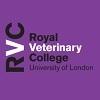Explore all the information on
Swine management
Pig production is the systematic rearing of pig breeds on scientifically based management principles for economic benefit. The main objectives of pig production are to provide consumers with pig meat and related products and to generate income for farmers.
Pig production plays a significant role in the livestock industry, providing an important source of protein and other valuable products. The systematic approach to pig rearing ensures that the pigs are healthy and well-cared for, which in turn leads to better quality products and higher yields. The focus on scientific principles and efficient management helps to reduce waste and increase profitability for farmers.
A swine producer who masters the art of good management has excellent profit opportunities. This is especially true with disease prevention and control. A healthy herd of good-growing, quality breeding animals — adequately fed and housed — provides maximum profit opportunities for the owner who does not over-spend for facilities and/or feed.
Introduction
During the past few years, there has been growing concern expressed by the public over the continued use of individual stalls in gestation or pregnant sow housing systems. In the United States, this has resulted in legislation by a number of states to ban individual stalls or pressure from retailers like McDonalds and Safeway (grocery food chain) to not purchase pork raised in facilities with sows housed in stalls during...
Comments : 0
Recommendations: 0
As a homeothermic species, the pig maintains a relatively constant core body temperature. When raised in pens with outside access, it aggressively modifies its behavior in response to changing climatic conditions. If conditions are such that it risks losing body heat it seeks shelter, huddle with other pigs, burrow in materials such as small grain straw, eat more feed for increased metabolic heat production, etc. If conditions threaten to elevate body temperature it seeks...
Comments : 0
Recommendations: 0
I have recently taken over a 30 sow piggery. I have ordered 20 extra gilts to increase my sows to 50. I would like to know if it is ok to keep my pregnant sows in one pen (say 20 per pen) and only separate them only a few days (e.g. one week) before they farrow? My second question is what is cheaper between using a boar and using artificial insemination? I know this answer may depend on how much you pay for the sperm in each country, but I am looking more for a general rule of...
Comments : 6
Recommendations: 0
Unlike humans, when pigs are born, they enter the world without any immunity against foreign elements like disease-causing pathogens. Their chance for survival relies heavily on getting enough colostrom—a milk-like substance produced by mammals after giving birth.
Newborns that fail to nurse and receive colostrum from the sow within the first 24 hours usually die. That's because piglets are born with limited energy stores, and colostrum also...
Comments : 1
Recommendations: 0
Timely feeder management and maintenance of feeding systems can reduce feed costs — the largest expense of a grower-finisher operation. On most farms, feed cost can range from 65%–75% of the total cost to produce a grower-finisher pig to market weight. It only makes sense to continually look for ways to optimize the use and performance of your most expensive input. Estimates suggest that 2%–20% of feed on swine farms is wasted. Feed...
Comments : 0
Recommendations: 0
Introduction
Consumer interest continues to focus on where food comes from and how it is raised. The European Union has banned the use of sow confinement stalls by 2013, and Ohio has banned the use of new gestation stalls, effective July 2010, with existing stalls to be phased out over the next 15 years. Currently, Canada does not ban sow gestation stalls. However, societal pressure and packer requirements to supply niche markets are...
Comments : 0
Recommendations: 0
Introduction It has been reported that during routine vaccinations, h pigs can display a "buzz" response. A buzz response can be defined as the 6-h period immediately following vaccination, where pigs display marked lethargy. To report this alteration in a pigs' behavior, the authors used a "willingness to approach" (WTA) methodology. The paper reported statistical differences between pre- and post vaccination WTA behavior, however, the authors...
Comments : 0
Recommendations: 0
Introduction In recent years, several production systems in the United States have gone from housing grow-finish pigs in small pens of <30 pigs to much large pens of >100 pigs per pen. Recent industry accounts, however, suggest that these large pen configurations may have negative aspects on growth performance of the pigs and morbidity / mortality. In addition, little is known about how these large pen configurations affect the welfare of...
Comments : 0
Recommendations: 0
Summary and Implications The objective of this experiment was to determine the behaviors and postures of nursery aged pigs when classified as "not approaching" a human observer when using a digital image. A total of 1,817, ~6 wk old mixed sexed nursery pigs were used. Pigs were housed in commercial nursery pens. The approachability of pigs followed procedures used by Fangman et al., (2010). Pigs were classified into three categories (1) ...
Comments : 0
Recommendations: 0
Summary and Implications The objective of this experiment was to compare two approachability definitions of nursery pigs to a human observer in their home pen using a digital image. A total of 79 pens in two rooms (40 in room 1 and 39 in room 2) were used. A total of 1,817, ~6 wk old mixed sexed nursery pigs, weighing ~25.4 kg were used. Two definitions for pigs reacting to a human in their home pen were compared. Determining the approachability...
Comments : 1
Recommendations: 0


Study of Effectiveness of Hygen Pro® Strept Phytobiotic versus Clinical Strains of Streptococcus Suis of Porcine Origin
Suggested link
The Humane Society of the United States Applauds Move The Humane Society of the United States prefers a shorter time frame, but still welcomes news from McDonald's that the company has created a definite timetable to eliminate gestation crate confinement of breeding pigs from its pork supply chain. The 10-year timeline announcement came as a follow up to McDonald's announcement in February that it would phase out the use of the cruel...
Comments : 0
Recommendations: 0
Dear Users, This is an interesting forum from our Spanish community, generated by Ervin Poou from Guatemala: Dear friends, I take this opportunity to solicit comments about Weaning at 14 days as an alternative to increase the piglets produced per sow per year and to reduce mortality from crushing and diarrhea in the whelping box. Please if anyone has had experience in the subject I beg to share them. Thank you in advance! Ervin Poou ...
Comments : 23
Recommendations: 0
Introduction Salmonella enterica is one of the most common and widely distributed food-borne pathogens. The bacteria can contaminate almost any food type although raw eggs, poultry and pork are the most common sources of human outbreaks of salmonellosis [1]. Contamination can occur at any point of the food chain including primary production. Due to the ability of Salmonella to survive during large periods...
Comments : 3
Recommendations: 0
Background Respiratory diseases are a major problem in intensive pig farming [1] accounting for significant economic losses due to increased mortality, morbidity and treatment costs and reduced growth rates, feed conversion efficiency and carcass quality [2, 3]. Enzootic pneumonia and pleuritis (or pleurisy) are common respiratory diseases in the UK pig industry, lesions indicative of which are...
Comments : 0
Recommendations: 0
(1) What is the best method for ear notching? (2) Do people do tags and use them for the year colour and the number for the sow? (3) Are there metal tags available or are they all plastic? (4) What is the best way to put them in? (5) At what age are they put in? ...
Comments : 1
Recommendations: 0
Dear members, I would like to invite you all to share your opinions regarding this tip from Paul Thompson (ACME) As we move into winter, fluctuating temperatures can be a major stressor and precursor to pneumonia in pigs, warns says Paul Thompson, veterinary consultant to pig-breeding company, ACMC Ltd. Sophisticated environmental monitoring and control systems are available but, as a minimum, it is good practice to...
Comments : 0
Recommendations: 0
Summary Management of the sow herd has direct and indirect effects on the performance of their progeny and consequently, on herd feed conversion (HFC). Reducing sow replacement rate has a small direct effect on HFC due to changes in breeder feed consumption. However, the indirect impact of the associated reduction in the proportion of gilts and their progeny in the breeding herd has a...
Comments : 0
Recommendations: 0
I have started a small pig business of one sow which is due 6th October. How can i care for the pig in order to bore litter which are health and a large number of piglet.? thanks ...
Comments : 0
Recommendations: 0
In human medicine water contamination is a well-recognised route of disease transmission. In pigs, the importance of the correct flow rates for different classes of stock is well known but the quality of this water is sometimes neglected, says Paul Thompson, veterinary consultant to pig-breeding company ACMC Ltd.
As well as achieving the correct flow rate per minute, the water delivered needs to be palatable and...
Comments : 0
Recommendations: 0
Water and air! Today´s producers must keep these in mind as often as they do pigs, sows and profit margins. Society has become concerned about phosphorus and nitrogen in surface waters and groundwaters. Gas and odor emissions can cause nuisances and difficult relationships with neighbors. What can a pork producer do to simultaneously manage production efficiency, nutrient excretion and environmental impacts? Consider the...
Comments : 0
Recommendations: 0







.jpg&w=3840&q=75)








